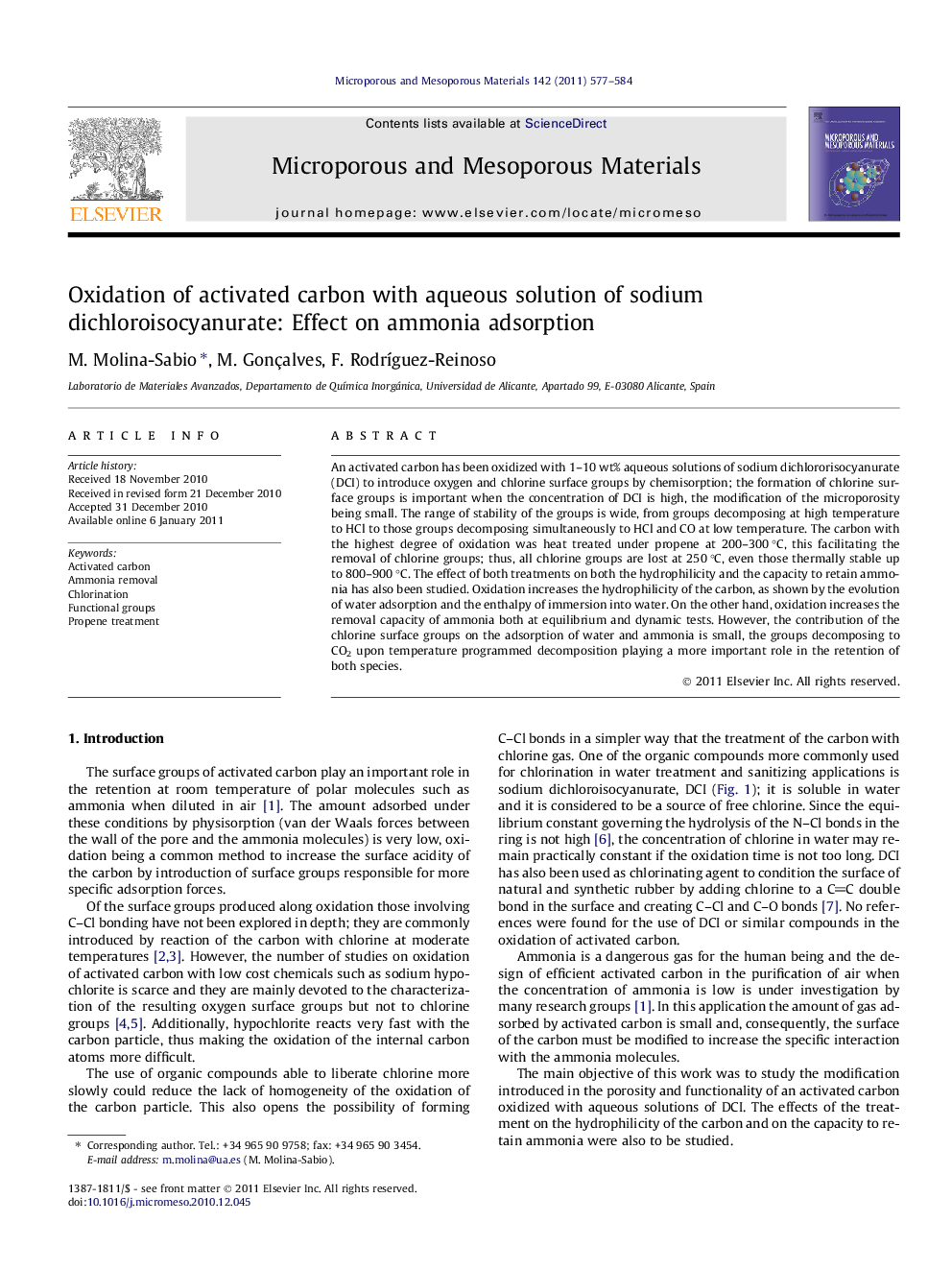| کد مقاله | کد نشریه | سال انتشار | مقاله انگلیسی | نسخه تمام متن |
|---|---|---|---|---|
| 74474 | 49092 | 2011 | 8 صفحه PDF | دانلود رایگان |

An activated carbon has been oxidized with 1–10 wt% aqueous solutions of sodium dichlororisocyanurate (DCI) to introduce oxygen and chlorine surface groups by chemisorption; the formation of chlorine surface groups is important when the concentration of DCI is high, the modification of the microporosity being small. The range of stability of the groups is wide, from groups decomposing at high temperature to HCl to those groups decomposing simultaneously to HCl and CO at low temperature. The carbon with the highest degree of oxidation was heat treated under propene at 200–300 °C, this facilitating the removal of chlorine groups; thus, all chlorine groups are lost at 250 °C, even those thermally stable up to 800–900 °C. The effect of both treatments on both the hydrophilicity and the capacity to retain ammonia has also been studied. Oxidation increases the hydrophilicity of the carbon, as shown by the evolution of water adsorption and the enthalpy of immersion into water. On the other hand, oxidation increases the removal capacity of ammonia both at equilibrium and dynamic tests. However, the contribution of the chlorine surface groups on the adsorption of water and ammonia is small, the groups decomposing to CO2 upon temperature programmed decomposition playing a more important role in the retention of both species.
Although oxygen and chlorine surface groups are introduced by DCI treatment, only the oxygen groups have a positive effect on the adsorption of ammonia.Figure optionsDownload as PowerPoint slideResearch highlights
► DCI introduces oxygen and chlorine surface groups in activated carbon.
► Propene treatment at 250 °C removes all chlorinated groups.
► Interaction of chlorine groups with both water and ammonia is not significant.
Journal: Microporous and Mesoporous Materials - Volume 142, Issues 2–3, July 2011, Pages 577–584